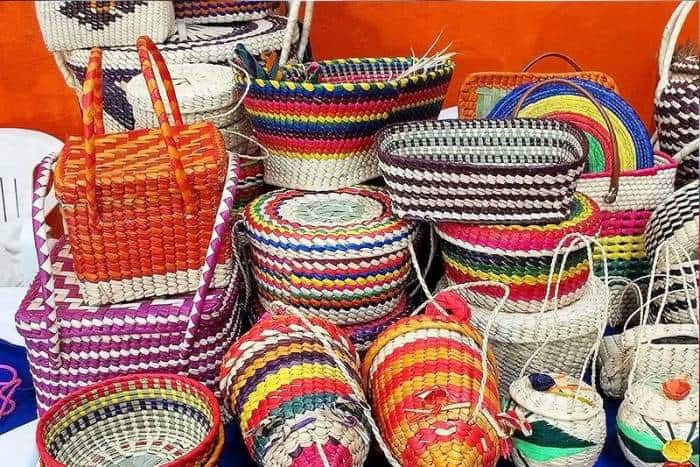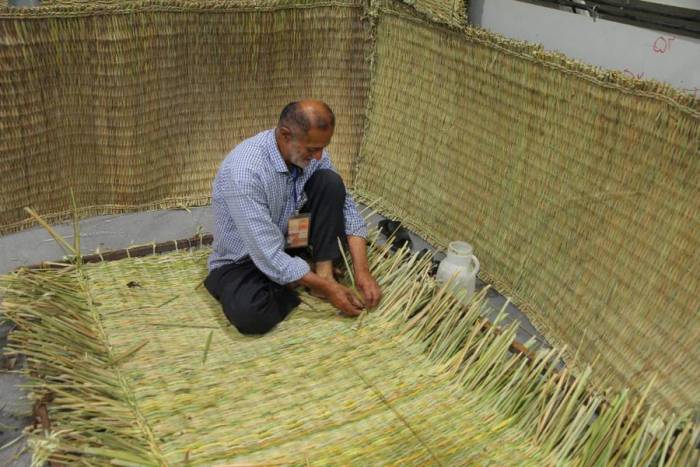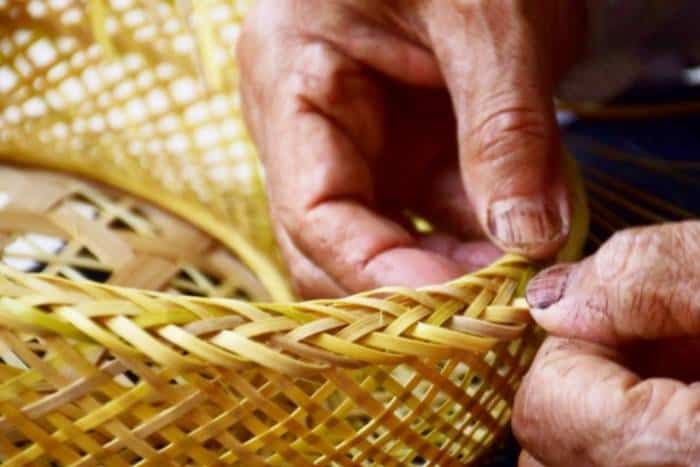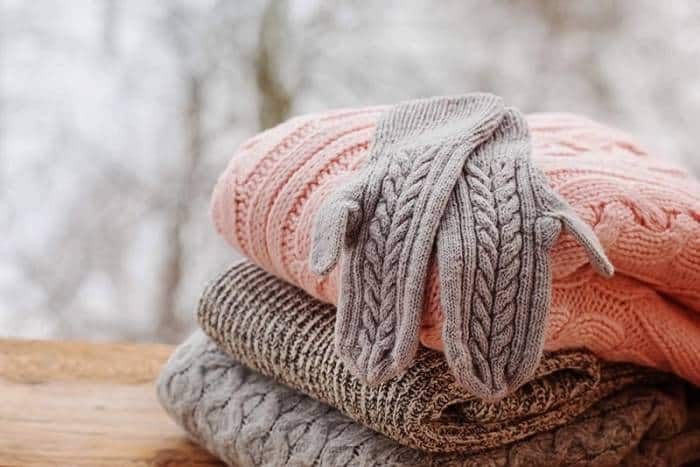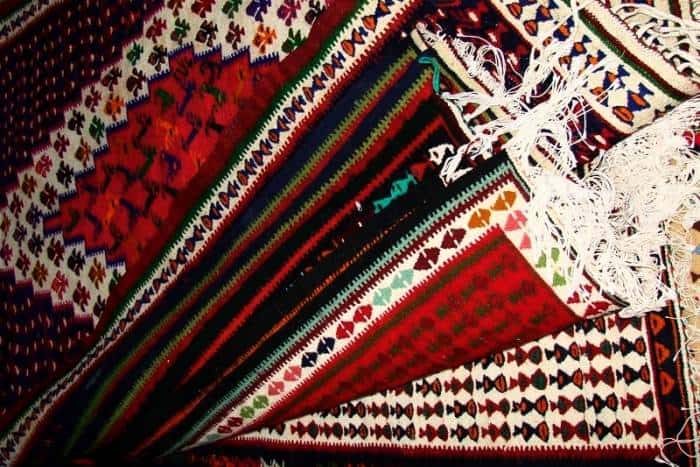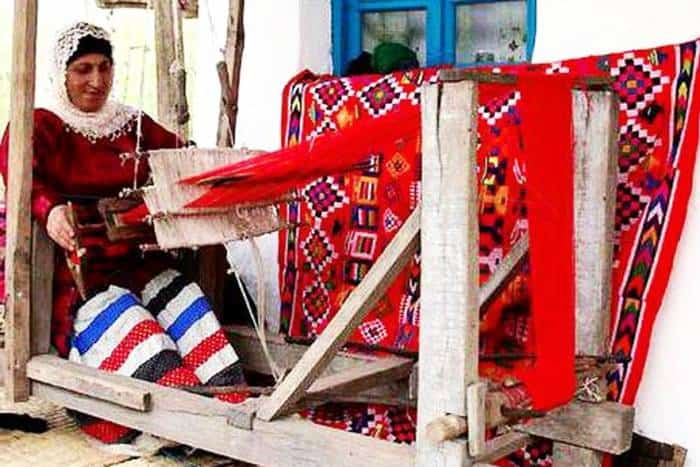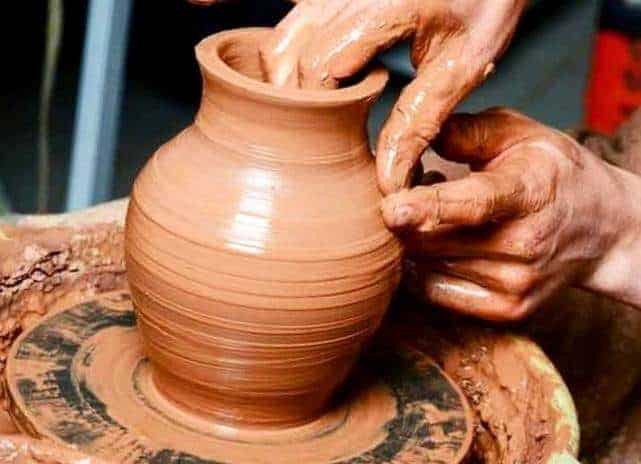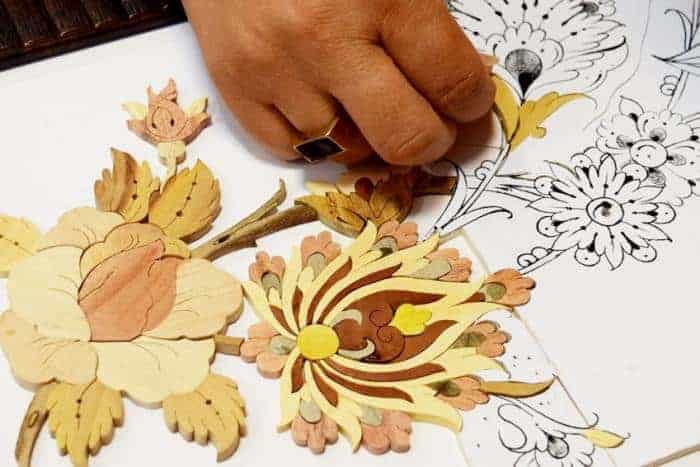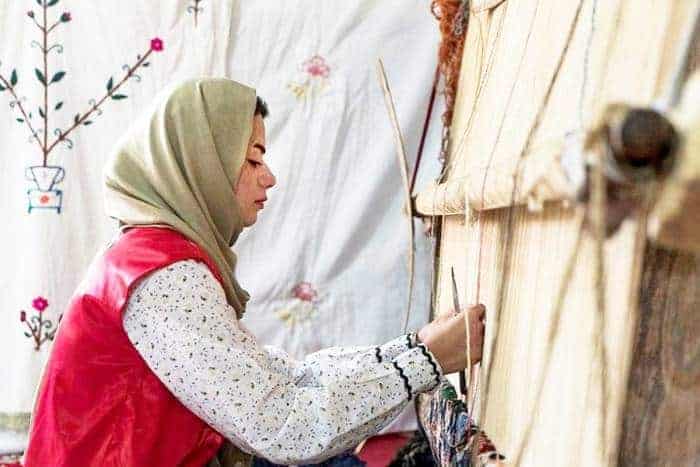آخرین مطالب
امکانات وب
What do you know about the symbol or myth? How familiar are you with what each of the motifs that are tied on carpets or other handwovens represent? In this article, you will get to know many symbols that you have surely seen on carpets and handwovens.
It should be said that a symbol is actually a manifestation of a thought, belief and even human observations of the surrounding environment. Since the past, the symbol has been associated with man and his life, especially during the cave-dwelling and nomadic era. In fact, it should be said that symbols have helped the inability of mythological people's thinking to discover and understand and have an abstract connection with truth and reality.
A symbol is one of the tools of consciousness and reveals concepts to us that cannot be expressed in other ways. Perhaps it can be said that the symbol has more expressive power to understand and be aware of the environment around us. It should be noted that coding or symbolism is one of the oldest and most fundamental expressions of concepts, and the secret of symbol influence in various aspects of human life can be considered.
But about the symbol in traditional art , which is a manifestation of the hand-woven carpet, it is a very suitable platform for the formation of the symbol. The symbol in the carpet works according to the social beliefs and customs that inspire the weaver's art.
Iranian hand-woven carpet is one of the functional arts, or rather multi-dimensional, which has benefited from phenomena such as symbolism and mythology in its various functions. From the point of view of art researchers, the pattes woven in the text of the carpet are not just colorful pattes to fill an empty space, but each line and color in each twist and tu is a symbol of the meanings and concepts of the Easte worldview, especially in Iran.
In fact, the real role of the symbol is that the human being, or rather, the artist, uses it to reach the true meaning of a phenomenon in a symbolic and inteal way, and the best way is to create a symbol. In all the arts of ancient Iran, we find countless symbols and signs, each symbol of a phenomenon and related to creation, life, death, fertility, drought, rainfall, etc. are. These symbols have been fixed in the minds of Iranians over time.
But the symbols in Iranian carpets are divided into 3 formats:
- Vegetal motifs such as plants, trees and flowers
- Animal motifs
- Geometric pattes
The role of trees in handwovens
The world of plants is a whole world where life is always flowing and renewable. In the ideal world of Iranians, plants and trees are the absolute meaning of life because of the greenery and vitality they give to humans, and of course, they also have a sacred aspect. In the meantime, the tree is of special importance because it is the embodiment of growth and life, and continuous birth and reproduction.
One of the mysteries of the tree is the world itself. Cooper, American archeologist and paleontologist, considers the tree to be a combination of sky, earth, water, and life in opposition to stone. Of course, we must say that the symbol of the tree is one of the oldest motifs that has attracted the attention of mankind and has used it in his works of art. Proximity to mountains, forests, plains and valleys are reasons for this. The patte of trees such as cypress, plantain, pine and oak has always been one of the most common motifs in Iranian handwoven carpets.
- Cedar role
Cedar has a very high position among Iranians. Due to its eteal greenness, this tree has a deep root in the beliefs of us Iranians, and its ritual concept is a sign of immortality and the resurrection. This tree was considered the tree of life during the Achaemenid and Sassanid eras. In the past, the cedar tree was considered the soul and religious life of Iranians, and its role has been discovered in different regions of the country, such as the easte stairs of the Apadana Palace in Persepolis with extremely precise and delicate carvings.
- The role of the plant
After the arrival of Islam in Iran and due to the limitations that occurred during the creation of works of art, such as carvings on carpets, Iranian artists presented paintings with a creative and abstract change, a religious structure and format, and an Islamic flavor.
Mohd Ali Eslami Nadushan believes that the role of the bush is the diagram of a cedar tree. Dehkhoda also stated in this regard that the cypress coat is the emblem of Iran and Iranians and can be seen on carpets, fabrics, inlays and other oaments of Iranian handicrafts.
- The symbol of the Iranian garden
The Iranian garden is a valuable heritage of Iranian culture and art in terms of its shape and geometry and the transcendental wisdom in its design. It has its roots in the ancient spiritual and mythological culture of Iran. The Iranian garden is a way to the innermost layers of thought and imagination, an interpretation of the meaning of life, the end of man, eteity and eteity, heaven and life, and the earthly manifestations of the realm of the kingdom according to Iranians.
The Iranian garden, which is enclosed in a wall, separates the wild, indifferent and even hostile nature from the orderly nature and from the nature filled with beauty and grace by human hands.
- Naqsh Bagh Irani (Chaharbagh)
The mystical relationship of Iranians with the water of trees and flowers shows well that the Iranian garden is a sacred environment because it is a relationship between an exemplary garden and an earthly garden. Therefore, the archetype of the Iranian garden is always the source of all the past arts of Iran, as well as carpet weaving in the Islamic centuries. The carpet and the garden have pleasant similarities. The design of the garden map goes back to the role of the Baharestan carpet in the Sasanian era. This Minoan garden is symbolic of the image of the promised paradise of Iranians in the carpet.
Animal motifs
The use of animal motifs as a ritual symbol, myth, and decoration in Iran has a very ancient history and reaches back to millennia BC. Pattes, each of which later evokes the collective memories of Iranians as visual elements of the national identity.
The use of animal motifs in carpets has been common since at least the Achaemenid period. Animal motifs such as lion (the national symbol of Iranians), fish (called Mahi Darhem or Herati) and bird motifs such as Simorgh, peacock, etc. These colorful and beautiful creatures are common, diverse and famous carpet motifs, they give the carpet a special appeal and remind the viewer of life, effort and liveliness.
The scientist and researcher of Farsh believes that "among the societies and clans, birds and animals are each a symbol and a symbol of beliefs and an embodiment of imaginations." In carpets, like other fine arts such as painting, tiling, and penmanship, birds are a sign of beauty, freedom, and pride.
By drawing and weaving the shape of a bird, the carpet consciously or unconsciously writes the thoughts of the heart and inner desires and beliefs on this handwoven. From the carvings of simorgh and eagle, ambition and sharp talons, alertness from Hudod, crowing partridge, and peacock, this well-combined bird inspires the appearance and beauty of the people around it.
The history of using animal characters and images in art and its types is longer than human motifs. Iranian arts and especially hand-woven nomadic carpets have always been a suitable place for the presence of domestic and wild animals. Animals such as lion, eagle, cow, horse, fish, etc., which have a symbolic aspect and refer to the collective identity and memories of Iranians, are more than other animals in handwoven carpets.
Lion patte (the national symbol of Iranians) in a hand-woven carpet
One of the symbols that has been very prominent in the culture and art of Iran and is referred to as an Iranian symbol is the "Lion" figure. Since the lion is the national symbol of Iranians, compared to other animals, it has found a greater presence in the field of carpets. The proof of this claim is the lion's character in an abstract and lonely form, which is woven in Persian and Bakhtiari lion carpets. This shows the special interest of weaving artists towards this symbolic animal.
This animal was considered as an indicator of the fertility of the earth in the ethnic and mythological beliefs of Iran. The lion's head is a sign of care and vigilance, and his rear body is a manifestation of power. The meanings of the lion symbol include fire, majesty, piety, sunshine, victory, summer, bravery, spirit of life, kingdom, courage, power and divine power, heat of the sun, care, superhuman and subhuman strength.
The role of the lion, which has long been repeated as a symbol of dominance and leadership in many types of Iranian artists' creations and has reached today through the power of imagination and innovation of carpet weaving artists and weavers, has been placed on the carpet text (Tanavali, 19:1537). In the art of the Islamic period, from the end of the Seljuk period, the lion and the sun were formed as Shia symbols, and the sun was an interpretation of the Prophet of Islam (pbuh) and the lion was a symbol of Hazrat Ali (pbuh).
The Shirke patte was the first patte in the Achaemenid period, and it was obtained from the Pazyrik carpet and it was obtained in the form of a row. In this picture of lions, the lion is a symbol of earthly power and the sun is a symbol of heavenly power, which in combination expresses the power that comes from the sky for people.
The role of fish
One of the other Iranian symbols related to national identity that can be found in the pattes of national art is the role of "fish". This motif has been present in different cultures as a symbolic role since ancient times. The presence of fish in carpet weaving is known as the patte of "fish in each other" or "Herati design". Fish has been present as a symbol in Iranian art and civilization such as Elamite and Achaemenid art and civilization. The fish motif is one of the most delicate and beautiful motifs. In the role of fish, two or four fish go around a pond.
In Iranian symbology, a fish represents life, and therefore, along with Haft Sin, Nowruz is the beginning of the new life of nature. "Fish was a symbol of purity, purity of soul (due to constant connection with water), fertility and fertility, and was considered as a guard for the palaces of kings." (Nistani, 2007: 81)
The components of the fish image are derived from the religion of love. The fish-shaped leaves were the same two fish that took the seal out of the water, and the round flower is the lotus flower on which the seal was placed. The basis and origin of it are two or four leaves of Iranian handwoven carpet motifs, curved elements, etc., which cover a large flower.
- Pattes of birds
One of the Iranian chickens that has always had a clear presence in the culture, art, literature and mythology of Iran is the legendary Simorgh, which is especially visible in carpets with animal and hunting grounds and Shahnameh themes. This symbolic Iranian chicken, which has prominent traits and characteristics in the collective memory of Iranians, also had a special place in the mind of the weaver artist.
Simorgh is a mysterious and mythological bird and is considered the first and most famous bird in Iranian mythology" (Shaygan, 1373:321.) From the symbolic point of view, Simorgh means "desire, fire, freedom, belief, authority, divinity, inspiration, empire It is tolerance, recklessness, chastity and piety, victory, tolerance and..." (Vaheddoost, 1999: 309.) In Ferdowsi's Shahnameh, Simorgh is a mythical and legendary wise bird, and it also has Yazidi and mystical dimensions.
- The role of the peacock
Another Iranian bird, which is considered a manifestation of Iranian culture and art, is the peacock. A bird that is also known as the bird of paradise. "The role of the peacock often has religious connotations, and it was not only used as a religious symbol in the works of art of the Islamic period, but it was also considered as a sacred bird in ancient times and in Zoroastrianism" (Golf, 131:131, 1986).
In Zoroastrian religion, this role is a symbol of Anahita chicken (Venus, god of water) and has the concept of immortality, and in some cultures, it expresses the concept of pride. The role of this magnificent and beautiful bird is abundantly depicted in Sassanid fabrics and sometimes it is created as a combination of peacock, dragon and simorgh on the fabric.
Today's carpet weaving depicts the patte of the peacock on the width of the carpet; Because he knows that it is a souvenir of Iranian symbols and the wishes of his ancestors. In many works of the Sassanid period, such as the reliefs of the Bostan arch, fabrics or plaster plaques of Tisophon, the motif of the peacock can be seen in the decorations or on both sides of the tree of life.
Human motifs
Among the pictorial elements and themes of the Iranian identity, we come to the famous Iranian kings, who, due to having different characteristics from other people, their behavior has been passed down to the next generations, and the weaving artist has tried to create a moment and a memory simply along with his beauty. Draw a picture of their life on a carpet.
A carpet with the theme of Shapur II sitting on his throne and looking at armed soldiers is kept in the collection of the Iranian Carpet Museum. In the role of this rug, three soldiers armed with spears are in charge of protecting Shapur II and two servants, one of whom is holding a canopy over the king's head and the other is seen blowing him.
Pattes of ancient and historical buildings
It can be boldly said that apart from the Iranian hand-woven carpet and the art of carpet weaving, the second art that can introduce the Iranian identity and the themes and concepts of the national identity is the Iranian architectural art, which has always been used throughout the history of Iran, both in ancient times and after Islam. attention has been Perhaps it is better to say that the Iranian architectural element is the most significant component of the national identity.
In Iranian buildings, historical works and buildings such as the Persepolis, Kasri Arch, Soltanieh Dome (the largest dome in the Islamic world) and Naqsh Jahan Square in Isfahan, etc., are the buildings that introduce Iranian identity and Iranian architecture to the world.
ایران زیبای ما...برچسب : نویسنده : مهتاب iranezibayema بازدید : 58
Poland is located in Central Europe, and its capital city, Warsaw, receives many tourists from all over the world every year. Compared to Weste European countries, this country has lower travel costs, and for this reason, it is considered a popular destination for tourists. One of the conces of travelers is buying souvenirs and gifts for friends and loved ones. Poland and the city of Warsaw have many souvenirs that are available at different prices and are a good souvenir of your trip to Warsaw.
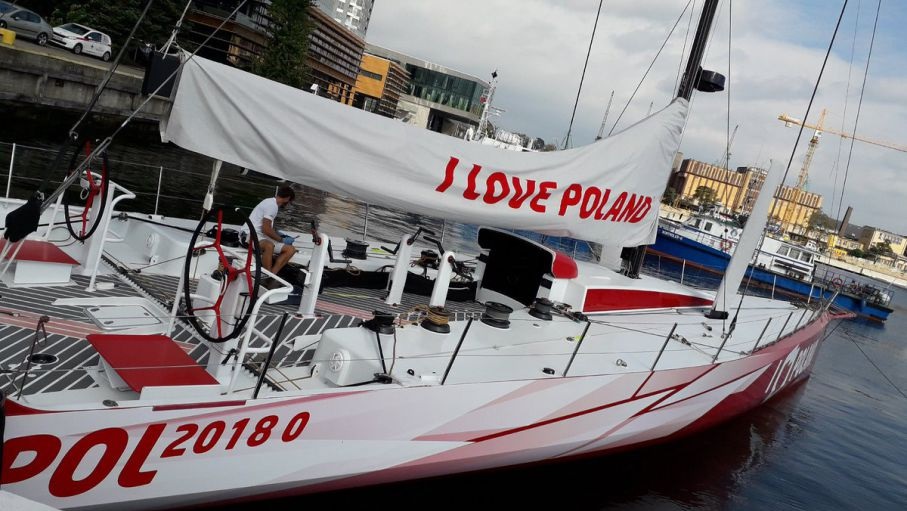
Baltic herba, known as the gold of the north, is one of the most famous souvenirs in Poland. This country has a lot of expertise in the field of jewelry, especially amber, and all kinds of jewelry such as necklaces, earrings, bracelets, etc. makes using this precious stone. Although you can find many jewelry stores in Warsaw, the capital of Poland, the main origin of this stone is the city of Gdańsk.
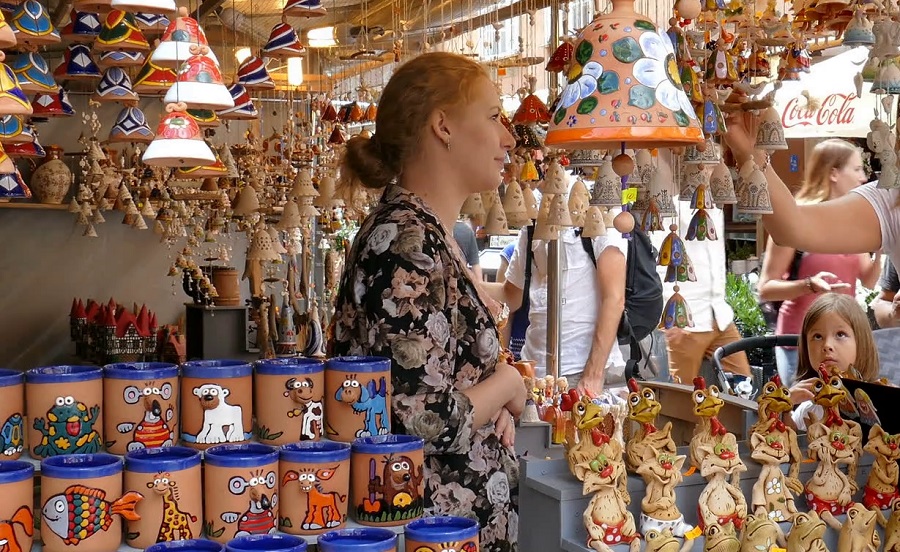
The city of Gdansk is one of the tourist destinations in Poland to buy souvenirs
It is interesting to know that amber is actually the hardened gum of a tree that has tued into a precious, transparent and valuable stone over millions of years. From the distant past, the amber obtained from this region was transported to other parts of the world such as Greece and ancient Rome and even Egypt through the Baltic Sea.

Amber: Polish souvenir
One of the most enjoyable things to do in a trip is to buy handicrafts of that region. Because it becomes a unique souvenir of that region .. If you go to Poland, don't forget to buy linen fabric. Poland is the hub of linen fabric production in Europe, and they produce everything from tablecloths, bedspreads, sheets to napkins, and you will be surprised by the beautiful and colorful embroideries. You can buy these souvenirs in stores in Warsaw and Gdansk. In Warsaw, many shops in the city's tourist streets such as Krakowskie, Przedmieście or Marszałkowska sell a variety of linen products.
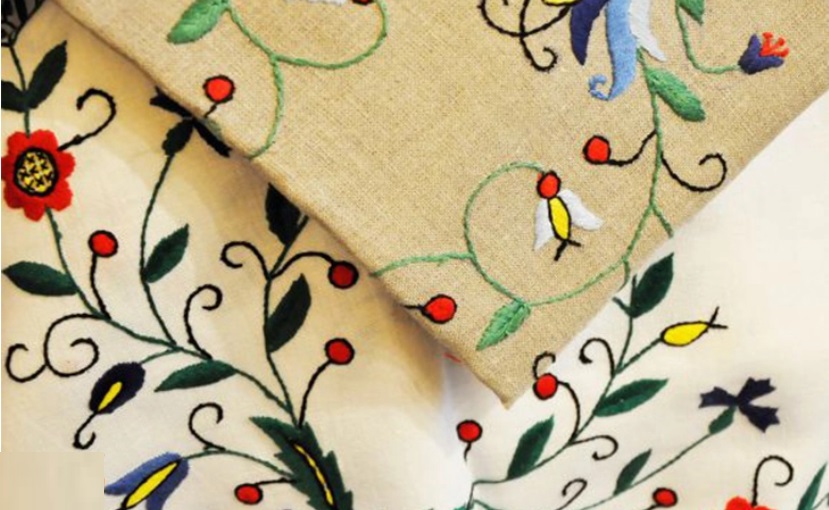
Polish linen handicrafts are one of the export products of this country in the Easte Bloc
In addition to linen and amber, ceramic products are considered the best souvenirs of this country. Very high-quality ceramic products with beautiful colors and glazes are produced in this country, which have attractive pattes. Polish ceramic dishes with beautiful and artistic designs and pattes are truly one of the best souvenirs in Poland, and you can buy various ceramic dishes such as decorative plates, cups, bowls, and even kitchen ceramic magnets, etc.
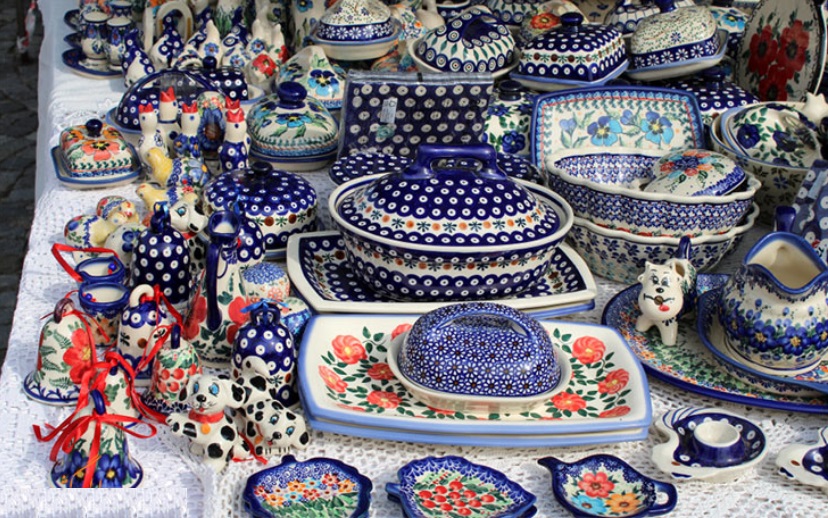
Polish ceramics
Poland is known for its chairs and biscuits. Ginger biscuits that are served in the cafes of the cities of this country. All kinds of traditional biscuits and sweets are made in Poland, but the most famous of them is without a doubt ginger biscuits. Ginger biscuits or Pieiczki are one of the best Polish souvenirs that you can take home as a souvenir.

Ginger biscuits, delicious souvenirs from Poland
Today, ginger biscuits are available in stylish and beautiful packaging and as a gift, and if you travel to this country, you can take it as a souvenir. Aromatic spices such as ginger, cinnamon, vanilla, cloves, cardamom and nutmeg are combined with natural sweet ingredients such as honey or chocolate to create these delicious biscuits.
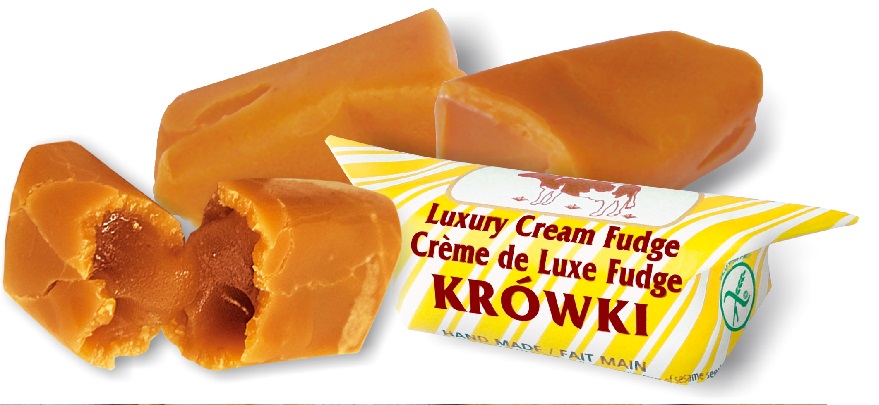
Sweets and chocolates are always a good choice for souvenirs and everyone will love them. Another Polish souvenir is a type of chocolate called Krowki or little cow, which is almost the same as the chocolate of our old cows. These chocolates are very popular in Poland and are traditionally made from milk, sugar and butter. The texture of these delicious chocolates is hard on the outside and soft and buttery on the inside.
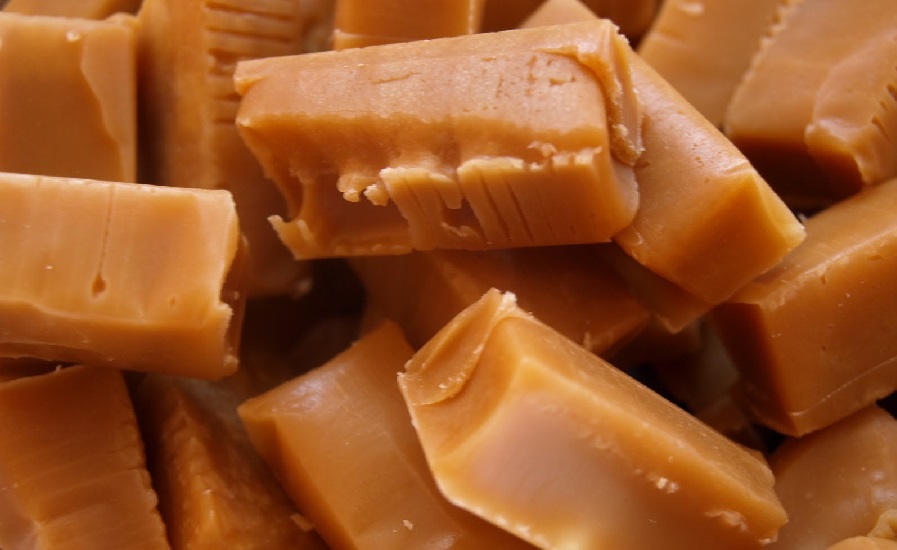
Delicious Polish chocolate
Every country has one or more traditional sweets and chocolates, and cow chocolate is very popular in Poland. When traveling to Poland, you can find these delicious and sweet chocolates in all cities, especially in Warsaw. Confectioneries, souvenir shops, etc. sell these chocolates in different packages. Polish cow chocolates are not very expensive and therefore they are the best option as souvenirs.
Another souvenir of this country is the jewelry box. It is produced in different sizes and has many buyers.
برچسب : نویسنده : مهتاب iranezibayema بازدید : 44
کشور لهستان در اروپای مرکزی قرار گرفته و پایتخت آن، شهر ورشو سالانه پذیرای گردشگران زیادی از سرتاسر دنیاست. این کشور در مقایسه با کشورهای غربی اروپا هزینه های سفر پایین تری دارد و به همین دلیل مقصد محبوبی برای گردشگران به حساب می آید. یکی از دغدغه های مسافران خرید سوغاتی و هدیه برای دوستان و عزیزان است. لهستان و شهر ورشو سوغاتی های زیادی دارد که با قیمت های مختلف وجود دارند و یادگار خوبی از سفر شما به ورشو هستند.

هربای بالتیک که به طلای شمال شهرت دارد یکی از مشهورترین سوغاتی های لهستان است. این کشور در زمینه جواهرآلات و به ویژه کهربا تخصص زیادی دارد و انواع زیورآلات مثل گردنبند، گوشواره، دستبند و …. را با استفاده از این سنگ گرانبها می سازد. اگرچه در ورشو، پایتخت لهستان می توانید جواهرفروشی های متعددی را پیدا کنید، اما خاستگاه اصلی این سنگ شهر Gdańsk است.

جالب است بدانید که کهربا در واقع صمغ سفت شده درخت است که در طول میلیون سال به صورت یک سنگ گرانبها و شفاف و با ارزش درآمده است. از گذشته های دور کهرباهای به دست آمده از این منطقه از طریق دریای بالتیک به نقاط دیگر دنیا مثل یونان و رم باستان و حتی مصر منتقل می شد.

یکی از لذت بخش ترین کارها در سفرخرید صنایع دستی آن منطقه است . زیرا یک یادگاری بینظیر از آن منطقه می شود.. اگر به لهستان رفتید، خرید پارچه کتان را فراموش نکنید. لهستان، قطب تولید پارچه کتان در اروپا است و از رومیزی و روتختی و ملحفه گرفته تا دستمال سفره، تولید می کنند و شما با گل دوزی های زیبا و رنگارنگ ظریف کاری شده شگفت زده خواهید شد. در فروشگاه های ورشو و گدانسک، میتوان این سوغات را خریداری کرد. در ورشو فروشگاه های متعددی در خیابان های توریستی شهر مثل کراکوفسکی (Krakowskie)، Przedmieście یا Marszałkowska انواع محصولات کتانی را در معرض فروش قرار می دهند.

علاوه بر کتان وکهربا، محصولات سرامیکی هم از بهترین سوغات این کشور محسوب می شود. محصولاتی سرامیکی بسیار با کیفیت خوش رنگ و لعابی در این کشور تولید می شود که نقش ونگارهای جذابی دارد. ظروف سرامیکی لهستان با طرح ها و نقش و نگارهای زیبا و هنرمندانه حقیقتا جزء بهترین سوغاتی های لهستان هستند و می توانید ظروف مختلف سرامیکی مثل بشقاب های تزیینی، فنجان، کاسه و حتی مگنت های سرامیکی آشپزخانه و … را خریداری کنید.

لهستان را با صندلی و بیسکویت هایش می شناسند. بیسکویت های زنجبیلی که در کافه های شهرهای این کشور سرو می شود. در لهستان انواع بیسکوییت و شیرینی سنتی تهیه می شود، اما بدون شک معروف ترین آن ها بیسکوییت زنجبیلی است. بیسکوییت زنجبیلی یا Pieiczki یکی از بهترین سوغاتی های لهستان است که می توانید به عنوان یادگاری به خانه ببرید.

بیسکوییت های زنجبیلی امروزه در بسته بندی های شکیل و زیبا و کادویی عرضه می شود و اگررهسپار این دیار شدید، می توانید به عنوان سوغاتی همراه ببرید. ادویه های معطر مثل زنجبیل، دارچین، وانیل، میخک، هل و جوز هندی با مواد شیرین طبیعی مثل عسل یا شکلات ترکیب می شود تا این بیسکوییت های خوش عطر و طعم را به وجود بیاورد.

همیشه شیرینی و شکلات انتخاب خوبی برای سوغاتی هستند و همه آن را دوست خواهند داشت. یکی دیگر از سوغاتی های لهستان نوعی شکلات به نام Krowki یا گاو کوچولو است که تقریبا مشابه همان شکلات گاوی های قدیم خودمان است. این شکلات ها در لهستان بسیار محبوب هستند و به طور سنتی از شیر، شکر و کره تهیه می شوند. بافت این شکلات های خوشمزه از بیرون سفت و از داخل نرم و کره ای است.

هر کشوری یک یا چند شیرینی و شکلات سنتی دارد و در لهستان هم شکلات گاوی از محبوبیت زیادی برخوردار است. در سفر به لهستان می توانی این شکلات های خوشمزه و شیرین را در تمام شهرها و به ویژه ورشو پیدا کنید. قنادی ها، فروشگاه های سوغاتی و … این شکلات ها را در بسته بندی های مختلف در معرض فروش قرار می دهند. شکلات گاوی لهستانی قیمت چندان بالایی هم ندارد و به همین دلیل به عنوان سوغاتی بهترین گزینه هستند.
از دیگر سوغات این کشور، جعبه جواهرات است. در سایز های مختلف تولید می شود و خریداران زیادی دارد.
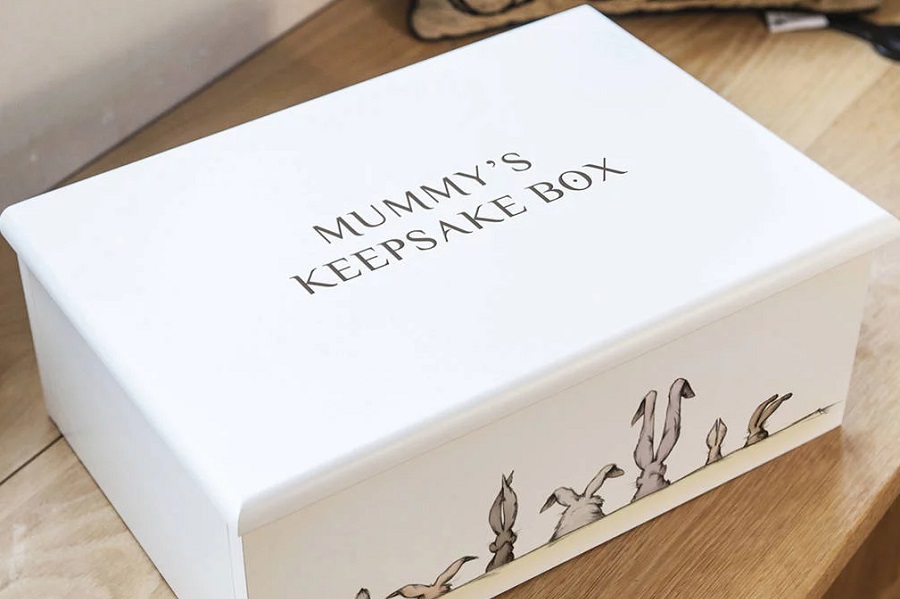
برچسب : نویسنده : مهتاب iranezibayema بازدید : 42
Russia is one of the most important cradles of history and art in the world. Linen fabrics, handicrafts, woolen shawls and crystal jewelry are among the best souvenirs of Russia. In this country, you can find books, historical manuscripts and old expensive objects. If you are interested in antiques, you have to pay a tax to the Russian govement to get a license to buy these products.
>> Dimoco toys:
Dimoco toys are made of clay and are special for Russia. The appearance of these toys is similar to animals. Russian women traditionally make Dimukovo toys. These toys are symbols and souvenirs of Dimokuvo village and there are different types of these dolls in this village.
Russian dolls
of this type of toys were used in previous centuries for religious ceremonies and ceremonies and various ceremonies in the field of agriculture. They were considered as a sacred object in various ceremonies, but with the passage of time, the level of belief in the sanctity or magical power of the toy Dimoku's height decreased and today it is just a doll for children to play with. Among the most famous souvenirs of Russia, we can mention the Dymokovo toy.
>> Pisanka from Russian crafts:
Pisanka, which is very old; It is one of the other Russian handicrafts. In fact, using eggs, they make such handicrafts, which are special for the Slavic people. Pisanka is designed using traditional and old designs. Also, wax-resistant design method is used in the design of Pisanka.
The designs used on Pisanka are not painted, but written on them using beeswax. Pysanka is derived from a Russian word that means writing; Because they use beeswax to write and create a patte on the egg. In other words, the types of eggs that can be used as decoration by creating a writing design on them; They say Pisanka.
Pysanka is one of the other Russian handicrafts that dates back several centuries
Pysanka is used in the celebration of Easter in many European countries. As one of the handicrafts of Russia, pysanka is also considered a symbol and a sacred factor. The opinion of some Russian people is that Pysanka has a spiritual power and prevents evil spirits from entering the house.
>> Valenki (felt boots) is a handicraft of Russia:
felt boots are very old, so that 1500 years ago, they made these boots for walking in the snow, and today the amount of production and consumption has expanded and also It is the most popular souvenir of Russia. Pure wool is used to make them in the traditional way, while factories add other materials to it and produce this type of boots.
Although felt boots have the ability to warm the feet, there is also the possibility of getting them wet. Therefore, you should wear rubber shoes when using these balconies. It is interesting to know that a one millimeter-sized volcano was made by an artist named Lusha, which can only be seen with a magnifying glass.
>> Amber is one of the souvenirs of Russia:
amber is called a kind of golden and orange stone, and it is actually the sap of trees that were placed under water for fifty years to tu into stone. By looking carefully at these stones, you can observe different types of insects inside them.
This stone, according to the opinion of Russian people, can increase human energy and reduce negative frequencies from a person. One of the purest Russian souvenirs that cannot be found anywhere in the world; It is amber that is used in jewelry such as rings, earrings, necklaces, etc.
A room was built for the King of Prussia in the past, and its door and walls were made of amber and gold, but no trace of it was left in World War II. Until now, the Amber Room was the eighth place in the list of great wonders of the world.
Amber is a precious golden and orange stone that is one of the handicrafts of Russia
>> Zhustov tray from Russian crafts:
Zhustov painting is a tin product (tray) that started in 1825 in the Moscow region from the village of Zhustov. Initially, Korbov and Philip Vashnyakov set up several educational workshops that showcased the 17th century Tagil painting tradition in Poppy Masha products. The trays were made of iron, but the color on these materials was weak. Then steel by-products were used in the mid-19th century.
With the rise of Soviet power, educational workshops joined labor cooperation. Zhostov trays have gained great popularity in the Soviet Union and abroad since the 1960s. In numerous exhibitions, there are beautiful items of folk handicrafts. The tray is known as a characteristic of the ethnic art of Russia and the country.
Zhostov's tray has become a characteristic of the ethnic art of Russia and the country
>> Paolo Posad shawl and scarf:
One of the souvenirs of Russia is the Paolo Posad shawl, which is a special gift especially for women. This shawl won the 2012 Eurovision Mode Festival as part of the costumes. Russian women wear Paulo Posad shawls or scarves with fur coats in winter. These shawls are woven using wool or silk.
>> Traditional Russian samovar:
In Iranian culture and tradition, samovar has a long history. In fact, the samovar entered Russia during the Roman Empire, and then samovar production began in the city of Tula by the order of Peter I. After that, a person named Kapirzin established a workshop in this field in the 19th century. These samovars have various designs, colors and sizes.
Samavar is one of the Russian handicrafts that was imported to Russia from the Roman Empire
>> Gzhel:
a type of Russian pottery is called Gzhel, which is used for decorative or kitchen purposes. Gazelle was originally produced in a village with the same name. Today, these blue and white dishes are found all over the world. You can also use these gazelles to drink tea. The price of the dishes varies depending on the size, type of work and the number of dishes you want. Gazelle is one of the other souvenirs of Russia.
>> Kokoshnik scarf:
Among other beautiful and colorful souvenirs of Russia, we can mention the fancy Kokoshnik scarves, which were considered a part of the Russian national costume for a long time, when women used to weave their hair and use these scarves.
برچسب : نویسنده : مهتاب iranezibayema بازدید : 46
صنایع دستی یاسوج
یاسوج یکی از شهرهای موجود در استان کهگیلویه و بویر احمد است. این شهر دارای مردم با فرهنگ و خوش سلیقه ای است که بسیاری از آن ها دستی بر هنر دارند و صنایع دستی بسیار ارزشمندی را تولید می کنند. در ادامه برخی از صنایع دستی موجود در یاسوج را ذکر خواهیم کرد. با ما همراه باشید.
جاجیم بافی
جاجیم از مهمترین صنایع دستی این منطقه از کشور محسوب می شود. هنرمندان یاسوجی جاجیم را به صورت افقی بر روی زمین قرار می دهند و شروع به بافتن آن می کنند. همچنین در انتهای جاجیم منگوله هایی را آویزان می کنند که زیبایی منحصر به فردی را در آن پدید می آورد. خرید صنایع دستی
قالی بافی
بافت قالی وقالیچه در میان مردم عشایر این سرزمین بسیار رواج دارد. درواقع قالی از اساسی ترین لوازم خانه و جهیزیه دختران عشایر می باشد. قالی ها معمولا از سه جز تار، پود و پرز قالی تشکیل می شوند. برای بافت تار از پنبه و یا ترکیب پشم و مو استفاده می شود. برای پود نیز از پشم و پنبه استفاده خواهد شد. همچنین برای پرز قالی از پشم و کامواهای رنگی نیز استفاده می شود. در این استان اغلب دار استفاده شده برای قالی بافی به صورت دستی و ساده ساخته می شود.
چنته بافی
چنته با استفاده از بافت قالی و یا گلیم ساخته می شود.درواقع بافت مستطیلی و یا مربعی کوچک از گلیم و یا قالی را تهیه می کنند و لبه های آن را می دوزند و در انتها از یک بند و منگوله هایی در اطراف آن استفاده میکنند تا چنته ای کیف مانند به وجود بیاورند و از آن برای قرار دادن وسایل مهم و شخصی مانند قرآن و آینه و… استفاده نمایند.
توبره
این دست بافته نیز توسط مرم عشایر مورد استفاده قرار می گیرد. درواقع توبره در جهیزیه دختران عشایر قرار داده می شود و دارای بندی طنابی شکل است که بتوان آن را بر روی دوش گذاشت و یا در مکانی آویزان نمود. از توبره برای حمل و نقل علف و علوفه استفاده خواهد شد. همچنین از نقش هایی مانند گل آدمی و گل توبره بر روی توبره ها استفاده می شود.
ایران زیبای ما...برچسب : نویسنده : مهتاب iranezibayema بازدید : 42
برچسب : نویسنده : مهتاب iranezibayema بازدید : 88
سوغاتی های یک شهر مخصوصا اگر دست ساز و سنتی باشد یکی از جذابیت های مهم سفر هر کسی محسوب می شود و ارزش بسیار بالا و خاصی دارد. صنایع دستی و سنتی که در استان گیلان وجود دارد قدمت بسیار بالایی داشته و همیشه باعث شده است که سبد خرید گردشگران رنگارنگ شود.
این منطقه همواره توانسته است از جایگاه ویژه ای در صنایع دستی با اصالت برخوردار شود و در میان گردشگران ایران و توریست ها طرفداران بسیار زیادی به خود اختصاص دهد. زمانی که وارد بازارهای گیلان می شوید مطمئنا جذب هنرهای دستی رنگارنگ خواهید شد که هر کدام با دستان هنرمند زنان و مردان گیلانی خلق شده اند و شما می توانید با خریداری آنها یک هدیه بسیار به یاد ماندنی و ارزشمند به عزیزانتان تقدیم کنید.
حصیر بافی
از رایج ترین صنایع دستی مردم این مرز و بوم بالاخص مناطقی همچون غازیان ، بندر انزلی ، جفرود ، خمام ، حصیر بافی نام دارد که اکثراً توسط بانوان انجام می شود. سوف یا لی از جمله مواد اولیه مورد نیاز در این صنعت می باشند که به صورت خود رو اطراف آبگیرهای کوچک و مرداب ها رشد می کنند. در فصول غیر کشاورزی بافتن حصیر مناسبترین جایگزین برای زمین داران و کشاورزان روستایی به شمار می رود. از محصولات این صنعت می توان به آبکش، زیر انداز، زیر داغی، زنبیل، انواع سبد و ... اشاره کرد.
عروسک های کاموایی
عروسک های کاموایی نوعی عروسک دستباف فانتزی محسوب می شوند که توسط زنان شهر ماسوله و در اوقات فراغت شان بافته می شود و از جمله سوغاتی های پرطرفدار این منطقه به شمار می رود چرا که در بین مسافران و گردشگران طرفداران زیادی به خود اختصاص داده است. چنانچه شما نیز به این منطقه سفر کردید از خریدن این عروسک های جذاب به عنوان یادگاری غافل نشوید.
بامبو بافی
در فرهنگ دهخدا بامبو به معنی خیزران یا نی اطلاق شده است. این کلمه یک کلمه چینی بوده و نوعی خیزران به شمار می رود که در زمین های پر از آب و مردابی به عمل می آید. این صنعت در منطقه گیلان بسیار رایج است. شکل پذیری و خاصیت ارتجاعی از مهمترین ویژگی های بامبو می باشد و همین مشخصه باعث می شود که محصولات ظریف، متنوع و زیبایی از آن به عمل بیاید. شهرستان لاهیجان علی الخصوص روستای لیالستان از مراکز عمده تولید و بافت محصولات صنعت بامبو به شمار می روند.
چموش دوزی
چموش نوعی کفش چرمی محسوب می شود که توسط برخی از هنرمندان در شهرهای استان گیلان بافته میشود و انواع مختلفی دارند. پر استفاده ترین مدل این کفش ها دارای بند های بلند مخصوصی است که دور پاها پیچیده میشود. جالب است بدانید که این کفش ها به صورت بی رنگ و بسیار ساده تولید شده و با استفاده از نخ های قرمز، زرد و سبز تزیین می شوند. ناگفته نماند که در گذشته با رنگ های طبیعی این کفش ها را رنگ می کردند.
دست بافته های پشمی
فرآورده های حاصل از دامداری، پشم ها هستند که مرغوب ترین نوع آنها در مناطقی از گیلان رونق دارد. دستگاه های ریسندگی پس از چیده شدن پشم ها آنها را به نخ تبدیل می کنند و شیوه رنگ کردنشان با روش های مختلف طبیعی یا شیمیایی انجام می شود. در مناطق کوهستانی زنان معمولاً این نخ ها را در بافت لباس های پشمی خود مثل دستکش، بلوز، جوراب و شال گردن استفاده می نمایند. ماسوله ، انزلی و رشت از جمله شهرهایی هستند که به عنوان مراکز بافت و تولید این دست بافته ها شناخته شده اند.
شال بافی
از هنرهای دیگر بانوان گیلانی می توان به شال بافی اشاره کرد. این محصولات در غرب گیلان ، بالاخص شهرهای گالش و تالش رونق دارند. شال های دستباف رنگین و زیبای سنتی که از پشم بافته می شوند از نفوذ هر گونه سرما و رطوبتی جلوگیری می کنند و در مناطق مرطوب و کوهستانی مورد استفاده بیشتر ساکنان آن قرار می گیرد.
گلیم بافی
کلیم بافی جزو آن دسته هنرهای سنتی به شمار می رود که در سرتاسر ایران رونق دارد و با توجه به فرهنگ خاص هر منطقه از طرح ها و نقش های گوناگونی برخوردار است. گلیم در استان گیلان به عنوان زیر انداز کاربرد دارد و بیشتر توسط زنان بافته می شود. جنس گلیم ها بیشتر از نخ ، پنبه و پشم می باشد و اکثرا در مناطق مرتفع استان مثل تالش و آستارا بافته می شود.
رشتی دوزی
رشتی دوزی به عنوان نوعی قلاب دوزی در رشت شناخته شده است که یکی از اصیل ترین صنایع دستی این استان به شمار می رود و امروزه در میان بانوان این خطه رایج است. در واقع نوعی تزئین روی پارچه های ضخیم می باشد که از طریق رودوزی انجام می شود به طوری که با استفاده از آن با نخ های ابریشم زمینه پارچه ها را تزیین می کنند، به جرأت می توان گفت که این هنر یکی از کهن ترین صنایع دستی استان گیلان محسوب می شود. اگر به رشت سفر کردید و قصد خرید صنایع دستی این منطقه را دارید قطعا رشتی دوزی می تواند محصولی خاص وجالب باشد.
چادرشب بافی
چادر شب ها پارچه ای در ابعاد دو در دو متر می باشد که در اکثر شهرها و روستاهای اطراف رشت بافته می شود. جالب است بدانید که در گذشته این چادر شبها از پارچه های ابریشمی خالص بر روی دستگاهی چوبی به نام پاچال بافته می شد ولی امروزه با نخ مصنوعی، پشم و الیاف و در رنگ های خاص و متنوع بافته می شوند و جذابیت بسیار خاصی دارند.
مینای خانه بندی
میناکاری یا مینای خانه بندی از صنایع سنتی استان گیلان به شمار می رود که ، نقره خالص استرلینگ، آب طلا و سنگهای معدنی جزو مواد اولیه آن به شمار می روند. محصولاتی همچون آیینه و شمعدان، سرویس چای خوری از جمله محصولاتی می باشند که با این هنر ساخته می شوند و به سفارش خارج از کشور نیز به آنجا صادر هم می شوند.
سفالگری
هنر سفالگری تاریخچه دور و درازی در استان گیلان دارد و به دوران پیش از تاریخ برمیگردد و در جای جای این منطقه و در ادوار مختلف رونق داشته است. لاهیجان، تالش، رشت، لنگرود، صومعه سرا و ... از جمله شهرهایی می باشند که سفالگری در آنجا رایج است. تولیدات سفالی به قدری در این منطقه از تنوع بالایی برخوردار است که حتی گاهی در برخی منازل نیز می توانید درخت هایی از پوشش سفالی مشاهده نمایید که در نوع خود بی نظیر هستند.
منبت
یکی دیگر از هنرهای دستی و سنتی استان گیلان منبت کاری نام دارد که با ایجاد نقوش نیمه برجسته و کنده کاری های جذاب روی چوب توسط ابزارهای خاصی به نام مغار انجام می شود. به دلیل اینکه در این منطقه شمالی چوب های مختلفی در جنگلها یافت می شود به همین خاطر است که این رشته هنری در اینجا رونق فراوانی دارد و تنوع محصولات بسیار بالا است.
تابلوهای نقاشی مینیاتور و معرق
تابلوهای نقاشی مینیاتور و معرق در سال های اخیر در شهر رشت و در قالب چندین کارگاه تولید و آموزش به فعالیت می پردازد که جایگاه بسیار خوبی به دست آورده است. تابلوهایی که با ظریف کاری هر چه تمام ساخته شدند و ارزش و قیمت بسیار قابل توجهی دارند. جالب است بدانید که تابلوهای نفیسی که با این هنر در این منطقه تولید شدند با استقبال بسیار خوبی مواجه شده اند.
خراطی و نازک کاری چوب
صنایع چوبی استان گیلان از مهم ترین محصولات سنتی و دستی این منطقه به شمار می رود. محصولاتی همچون جعبه جواهرات، بازی تخته، بازی شطرنج، صندوقچه، قلیان و ... که با ظرافت بسیار بالایی ساخته می شوند. نازک کاری چوب و یا خراطی در میان دستاورد های چوبی مردم این منطقه بسیار شهرت دارد و جمع کثیری از صنعتگران استان گیلان به تولید انواع وسایل چوبی با این رشته می پردازند. مهم ترین نکته ای که در این میان وجود دارد این است که وجود درختان در این منطقه باعث شده است که صنایع چوبی بیش از هر صنعت و هنر دیگری ترویج پیدا کند.
قالی بافی
سابقه بسیار طولانی در کشورمان به هنر قالی بافی تعلق دارد و به جهت نقوش خاصی که در آن اجرا می شود دارای شهرت جهانی میباشد. قالی بافی در سال های بعد از پیروزی انقلاب اسلامی و در سایه سرمایه گذاری های بخش عمومی در امر آموزش و تهیه و تدارک مواد اولیه آن و همچنین پرداخت اعتبارات تسهیلات بانکی در این استان نیز حیات دوباره یافت و در قالب تولید انفرادی در منازل و یا گروهی در کارگاه ها، در بسیاری از نقاط شهری و روستایی این استان رونق گرفت و قالی های پشمی و ابریشمی نفیسی تولید شد و همچنین ادامه دارد.
کدوی قلیانی
از خاص ترین صنایع دستی و سنتی گیلان میتوان به ساخت کدوی قلیانی اشاره کرد، کدویی که هنرمندان گیلانی با نقاشی روی آن اقدام به تهیه تنگ، پایه چراغ و یا ظرف محتوی آب قلیان می کنند. این هنر زیبا در گیلان به قلیان کوئی نیز معروف است. مرکز اصلی تولید و رواج این هنر متعلق به شرق گیلان علی الخصوص لیالستان لاهیجان میباشد.
ایران زیبای ما...برچسب : نویسنده : مهتاب iranezibayema بازدید : 73
خوزستان ، استانی است با چندین صنایع دستی شاخص که هر کدام، قدمتی طولانی دارند. صنایع دستی خوزستان از تنوع بالایی برخوردار بوده و مواد اولیه ی ساخت آن، غالبا از همین استان تامین میشود. صنایع دستی به عنوان بخشی از فرهنگ و هویت یک قوم و ملت به شمار می روند که معمولا بر اساس مواد اولیه و متریال موجود در یک منطقه جغرافیایی تولید می شوند. بشر از هزاران سال قبل فهمید که برای ادامه حیات خود نیاز دارد که از منابع طبیعی اطراف خود نیازهایش را تامین کند. به همین دلیل صنایع دستی در مناطق جغرافیایی با هم تفاوت هایی دارند. با گسترش تجارت و کسب و کار صنایع دستی در نقاط مختلف دنیا داد و ستد شدند، و همین موضوع باعث رونق آنها شد. البته این کار زمینه تقلید را نیز فراهم کرد اما از آنجایی که متریال، دانش و ذوق هنری در افراد و قوم های مختلف با هم متفاوت است، به همین دلیل صنایع دستی با یکدیگر تفاوت دارند. ایران کشوری است که از مهدهای تمدن در دنیا به شمار می رود و در ایران مناطق مختلفی وجود دارد که صنایع دستی آنها در سراسر کشور و حتی خارج از مرزهای ایران زبانزد است که از جمله این مناطق می توان به خوزستان و تمدن شوش در قلب آن اشاره کرد. این موارد باعث شده اند که در این استان انواع صنایع دست با پشتوانه چند هزار سال وجود داشته باشند. در ادامه تعدادی از صنایع دستی خوزستان معرفی می شوند.
کپوبافی یکی از شاخص ترین صنایع دستی خوزستان
نخل یا همان درخت خرما به همراه نی از پوشش های گیاهی و غالب استان خوزستان به شمار می روند و به همین دلیل از برگ های این درختان و گیاهان صنایع دستی مختلفی تولید می شود که ریشه آنها به هزاران سال قبل برمی گردد. کپوبافی یکی از صنایع دستی است که از برگ و ساقه گیاهان تولید می شود و شباهت زیادی به حصیر بافی دارد. تفاوت عمده کپوبافی و حصیربافی در این است که در کپوبافی برای جلوگیری از سادگی کار، از رشته های نخ های رنگی جهت تزیین استفاده می شود. معمولا برای تزیین کپوها گاهی از منگوله ها نیز استفاده می شود. از این صنایع دستی خوزستان می توان برای امورات کاربردی و تزیینی استفاده کرد.
گلیم افشار خوزستان
افشارها یکی از قوم های با اصالت و قدیمی ایران هستند که به دلایل شرایط خاص زندگی خود، در نقاط مختلفی از ایران سکونت دارند و یکی از معروفترین شاخه های این قوم بزرگ در استان خوزستان است. افشارهای استان خوزستان صنایع دستی مختلفی دارند و یکی از بهترین آنها که شهرت جهانی دارند، گلیم افشار خوزستان است. این گلیم از لحاظ تکنیک بافت و طرح های آن شباهت زیادی به گلیم های لر دارد. طرح این گلیم ها معمولا با نمادهای لوزی شکل که مضمون آنها مرتبط با کشاورزی، آب و هوا و زندگی عشایری است، بافته می شود. همچنین گلیم های افشار خوزستان را می توان از لحاظ طرح به گلیم های دو کله (یا دو ترنج) و سه کله تقسیم بندی کرد. استفاده از پشم های مرغوب، رنگرزی تمام گیاهی پشم ها و بافت زیبای چاکدار و محکم اشاره نمود.
قالی بافی در استان خوزستان
استان خوزستان یکی از مهدهای تمدن بشر به شمار می رود و قالیبافی به عنوان یکی از قدیمی ترین صنایع دستی این استان به شناخته می شود. قالی های این استان معمولا با نقوش ایلیاتی و ذهنی بافته می شوند. قالی خوزستان با پشم های مرغوب منطقه و رنگرزی سنتی بافته می شود و ابعاد آن معمولا کوچک پارچه تا متوسط می باشند.
گیوه بافی یکی از قدیمی ترین صنایع دستی استان خوزستان
گیوه بافی یکی از قدیمی ترین صنایع دستی استان خوزستان به شمار می رود که در شهرهای شوشتر، دزفول و بهبهان با رونق خوبی انجام می شود. گیوه ها پاپوش و کفش های سنتی هستند که از قرن ها قبل در نقاط مختلف ایران تولید می شدند اما ویژگی های بهتر گیوه خوزستان باعث شهرت آن شده است. در این استان از مواد اولیه کاملا طبیعی برای تولید گیوه استفاده می شود که از جمله آنها می توان به پارچه های نخی و پنبه ای، چرم طبیعی، نخ های طبیعی، موی بز و چسب کتیرا اشاره کرد. استفاده از متریال کاملا سنتی باعث شده که استفاده از گیوه خوزستان هیچگونه حساسیتی به همراه نداشته باشد.
احرامی بافی خوزستان
در استان خوزستان و از قرن های گذشته بافت زیلو و زیرانداز رواج داشته است اما با ورود دین اسلام تحولی در بافت این زیراندازها صورت گرفت و برای اقامه نماز یک زیرانداز خاص طراحی و تولید شد که با نام احرامی شناخته می شود. احرامی ها سجاده هایی هستند که در ابعاد کوچکی مثل 90×70 سانتی متر تولید می شوند و تکنیک بافت آنها به صورت کاملا سنتی و بر روی دارهای دو وردی انجام می گیرد. همچنین مواد اولیه این زیراندازها از نخ پنبه ای و پشم می باشد. از مهمترین مناطق بافت احرامی خوزستان می توان به شوشتر، بهبهان و دزفول اشاره کرد.
حصیر بافی
حصیر بافی یکی از صنایع دستی پرکاربرد استان خوزستان به شمار می رود که شهرهای خرمشهر، آبادان، شادگان و دشت آزادگان از مهمترین مناطق تولید آن به شمار می روند. حصیرها در این استان با استفاده از برگ های نخل و نی و با دو تکنیک کلی درهم رفته یا همان مشبک و همچنین روش مارپیچ تولید می شوند.مانند سبد، سفره، کلاه، گلدان، زنبیل حصیری، طبق و ... . حصیر بافی در خوزستان به عنوان یک صنایع دستی ارزشمند برای موارد مختلفی استفاده می شود که از جمله آنها می توان به عنوان زیرانداز، پوشش سقف و همچنین پرده اشاره کرد. ابعاد حصیر خوزستان معمولا کوچک پارچه است اما معمولا در بین عشایر گاهی می توان نمونه های بزرگ پارچه آنها را نیز مشاهده کرد.
خراطی
یکی دیگر از صنایع دستی خوزستان، هنر خراطی است. خراطی به هنر و صنعتی گفته می شود که در طی آن نقش هایی بر روی چوب حک می شود. شهرستان دزفول یکی از مهمترین مراکز استان خوزستان به شمار می رود که از قدیم صنایع دستی خراطی خوزستان در آن تولید می شدند. میل های زورخانه، مبلمان، جالباسی، نی قلیان، جعبه های چوبی و مهرهای سنتی از مهمترین صنایع دستی خراطی خوزستان به شمار می روند. اگر قصد تهیه سوغات از صنایع دستی خوزستان برای خانم های خانه دار را دارید، توصیه میکنیم حتما نگاهی به صنایع دستی خراطی این استان بیاندازید.
عبا بافی
از دیگر صنایع دستی خوزستان ، میتوان به عبابافی اشاره کرد که قدمتی پانصد ساله در این استان دارد. اعراب خوزستان لباس خاص و محلی خود را دارند و عبا به عنوان یکی از اجزای لباس آنها به شمار می رود به همین دلیل از گذشته عبا بافی در این استان عرب نشین رواج داشته است و در حال حاضر نیز بافت عبا به صورت سنتی در این منطقه تولید می شود و شهرستان بهبهان به عنوان مرکز عبا بافی این استان به شمار می رود. به عبارت دیگر عبای بهبهان از محبوبیت و شهره بسیار بالایی برخوردار است و دلیل اصلی این موضوع استفاده از مواد اولیه با کیفیت مثل پشم شتر و همچنین پشم گوسفند عربی می باشد. امروزه با وجود اینکه تولیدات عبا بافی خوزستان به میزان قابل توجهی تنزل یافته اما همواره از داخل و حتی کشورهای حوزه خلیج فارس برای آنها سفارشاتی وجود دارد.
ایران زیبای ما...
برچسب : نویسنده : مهتاب iranezibayema بازدید : 60
Today, the concept and use of the word "bag" is very different from what it was in the past. In the past, the word "bag" was often used as a bag for storing things, but today its concept and meaning have changed and the bag is used as an accessory to store and carry essential personal items. Today's small bags, along with straps that make them easier to carry and hang from the shoulder, are considered a fashionable bag of the day and are used to carry small personal items such as money, cosmetics and electronics such as mobile phones. These models of bags are usually designed in women's models and in most cases women use this model of bags, but for the past 30 years, some men's models have also been designed and produced for men.
The concept of a bag has been around for thousands of years and has evolved over the years under the influence of fashion and the need to carry personal items. In the continuation of this article from Leather Blog, we will briefly discuss the history of the bag and explain how the design and size of the bag have changed over the years.
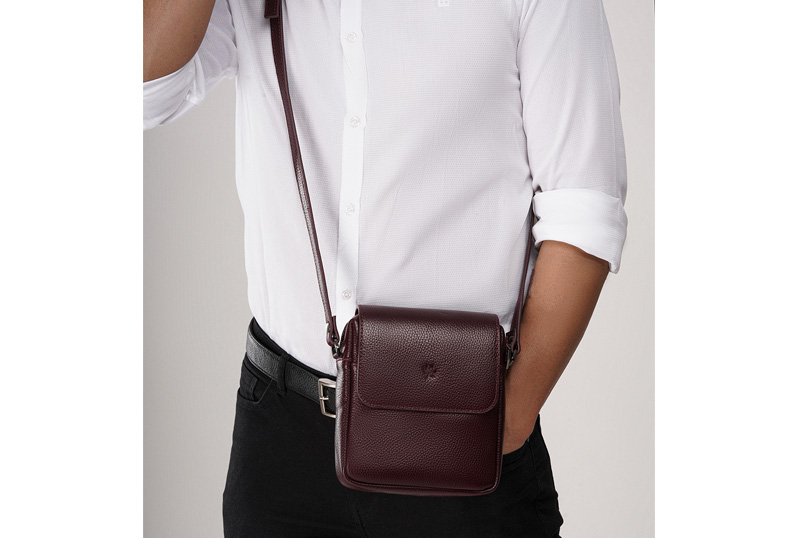
Kyiv in ancient times
The history of Kiev goes back more than 5000 years. In 1991, a man named Otsi (the oldest natural mummy discovered in Europe) was discovered in the Alpine mountains with a handbag next to him. The material of this ancient bag is made of antelope skin and has been attached to it. Further evidence of the ancient bag can be found in Egyptian pictographs in which several men carry bags around their waists. Other evidences include the period mentioned in the Bible, where Judas Iscariot (Iscariot) is introduced as someone carrying a bag. Among other examples, we can mention the petroglyph of an Assyrian man with a bag in his hand.
Today, the concept and use of the word "bag" is very different from what it was in the past. In the past, the word "bag" was often used as a bag for storing things, but today its concept and meaning have changed and the bag is used as an accessory to store and carry essential personal items. Today's small bags, along with straps that make them easier to carry and hang from the shoulder, are considered a fashionable bag of the day and are used to carry small personal items such as money, cosmetics and electronics such as mobile phones. These models of bags are usually designed in women's models and in most cases women use this model of bags, but for the past 30 years, some men's models have also been designed and produced for men.
The concept of a bag has been around for thousands of years and has evolved over the years under the influence of fashion and the need to carry personal items. In the continuation of this article from Leather Blog, we will briefly discuss the history of the bag and explain how the design and size of the bag have changed over the years.

Kyiv in ancient times
The history of Kiev goes back more than 5000 years. In 1991, a man named Otsi (the oldest natural mummy discovered in Europe) was discovered in the Alpine mountains with a handbag next to him. The material of this ancient bag is made of antelope skin and has been attached to it. Further evidence of the ancient bag can be found in Egyptian pictographs in which several men carry bags around their waists. Other evidences include the period mentioned in the Bible, where Judas Iscariot (Iscariot) is introduced as someone carrying a bag. Among other examples, we can mention the petroglyph of an Assyrian man with a bag in his hand.
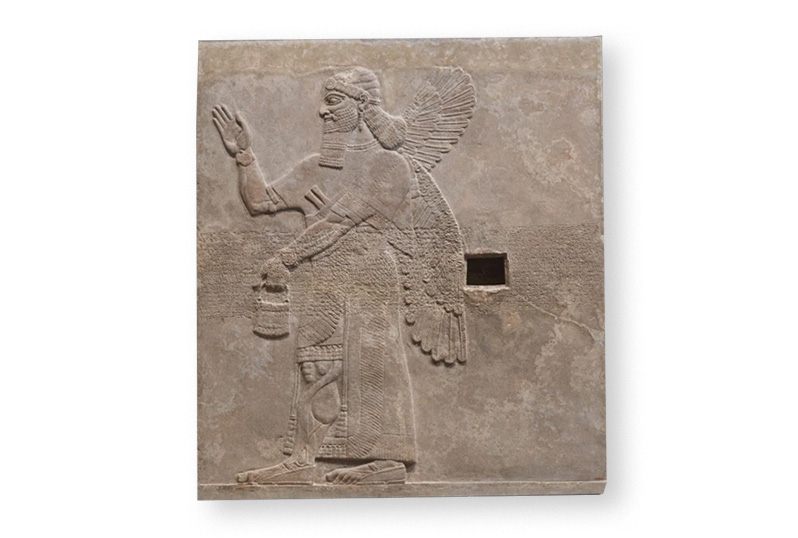
Kyiv in the Middle Ages
In the early Middle Ages the use of purses was very common among both men and women. The bag in the Middle Ages was made using a circular piece of cloth and a strap was used to close it at the edges. In the Middle Ages, instead of being carried on the shoulder, this bag was tied around the waist and on the clothes. These bags were very small and were probably only used to carry small items such as coins.
In the late Middle Ages, a new style of bag became popular among the aristocracy. These new model bags were made of a triangular metal frame with a leather cover on this metal frame. There was a small opening in the upper part of this model of medieval bags and their lower part was also wider. The initial model of these bags was closed with the help of a strap, and the lid of the models that were made later was secured with the help of a metal clip. Bags in this era (similar to older bags in the Middle Ages) were hung from the waist by a metal strap or loop in the upper part of the bag.
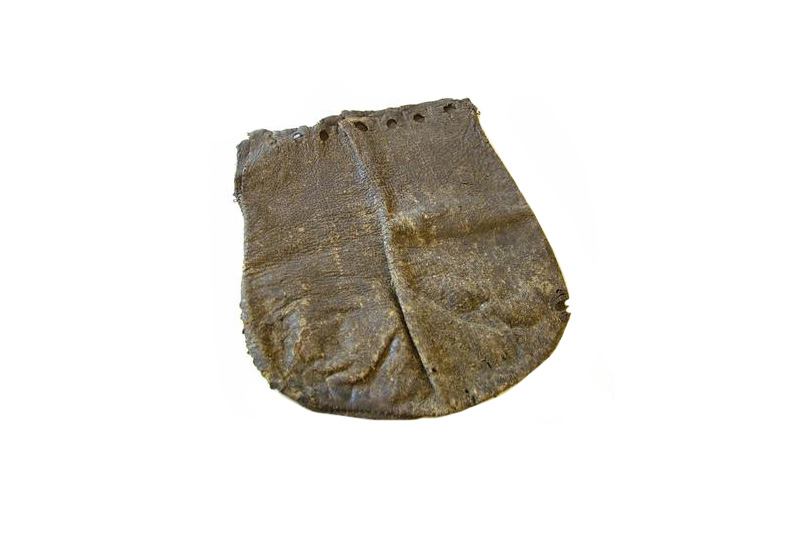
Kyiv during the Renaissance
During the 16th and 17th centuries, fashion changed significantly and more fabric was used in the production of women's clothing. For this reason, women could no longer carry their bags separately and outside of their clothes as in the past, and this led to the invention of bags that fit inside their clothes.
During this period, men's fashion and men's bags changed as well. With the invention of the pocket around 1670, men no longer carried bags that were tied around the waist like in the past, and used smaller bags that were placed inside the pocket to store and carry money. These small bags became wallets in the future.
Kyiv during the industrial revolution
In the 18th century, along with the discovery of the ancient city of Pompeii in Italy, fashion changed once again. During this period and with this discovery, the interest in designing with a long and narrow style as well as a sleek one increased. As a result, women wore more compact clothes and could no longer hang their bags or purses from under their clothes like in the past; It was during this period that the bag was used again. During this period, women used older models of bags that were narrow and had wrist straps.
As rail travel increased in the 19th century, the demand for a more durable bag model that could hold more items grew. For this reason, the manufacturers of travel bags produced bags for traveling by train and specially for women.
The idea of today's mode bag was first proposed in 1841 by a great entrepreneur named Samuel Parkinson. For his travels, Parkinson had ordered a set of travel bags and suitcases for himself, as well as a bag for his wife. He realized that his wife's bag was too small and not of good quality and durability. For this reason, he ordered to make several models of bags of different sizes for his wife so that she can use a suitable bag according to her needs. He also ordered to use the same high-quality and durable leather that his travel bag was made of to produce these bags.
Parkinson to design and produce his desired handbags with H.G. HJ Cave signed a contract and thus the first luxury bag production line was launched. H.J. Due to the lack of popular acceptance of this model of mode bags, Kew stopped its mass production and produced this series of bags only for royals, celebrities and the rich.
Mode and contemporary bags
Handbags evolved significantly in the 1930s. Many different designs and models of today's bags, such as all kinds of handbags and strap bags, were invented in this period. Coco Chanel and Louis Vuitton are among the famous brands that emerged during this period and are still standing today.
During World War II, the design of the bag changed slightly. In this period, since metal was highly needed for war tools, plastic and wooden frames were used instead of metal frames. The use of wood and plastic in the production of bags lasted only a few years during this period, and after that they used metal again to produce bags.
In the 1970s, a model of small portable handbags, called the so-called men's bag, was once again used by men. Compared to other models, this model of bags had a more masculine appearance and allowed men to carry more items. Over the past twenty years, with the ever-increasing use of small electronic devices and gadgets (which require an additional bag to carry), the popularity of this small handbag model has increased.
Currently, Novin Leather is proud to produce and supply different types of leather bags, including office bags, shower bags, handbags, dress bags, backpacks, waist bags, neck bags, passport bags, makeup bags, and all kinds of wallets. shows
Kyiv in the Middle Ages
In the early Middle Ages the use of purses was very common among both men and women. The bag in the Middle Ages was made using a circular piece of cloth and a strap was used to close it at the edges. In the Middle Ages, instead of being carried on the shoulder, this bag was tied around the waist and on the clothes. These bags were very small and were probably only used to carry small items such as coins.
In the late Middle Ages, a new style of bag became popular among the aristocracy. These new model bags were made of a triangular metal frame with a leather cover on this metal frame. There was a small opening in the upper part of this model of medieval bags and their lower part was also wider. The initial model of these bags was closed with the help of a strap, and the lid of the models that were made later was secured with the help of a metal clip. Bags in this era (similar to older bags in the Middle Ages) were hung from the waist by a metal strap or loop in the upper part of the bag.

Kyiv during the Renaissance
During the 16th and 17th centuries, fashion changed significantly and more fabric was used in the production of women's clothing. For this reason, women could no longer carry their bags separately and outside of their clothes as in the past, and this led to the invention of bags that fit inside their clothes.
During this period, men's fashion and men's bags changed as well. With the invention of the pocket around 1670, men no longer carried bags that were tied around the waist like in the past, and used smaller bags that were placed inside the pocket to store and carry money. These small bags became wallets in the future.
Kyiv during the industrial revolution
In the 18th century, along with the discovery of the ancient city of Pompeii in Italy, fashion changed once again. During this period and with this discovery, the interest in designing with a long and narrow style as well as a sleek one increased. As a result, women wore more compact clothes and could no longer hang their bags or purses from under their clothes like in the past; It was during this period that the bag was used again. During this period, women used older models of bags that were narrow and had wrist straps.
As rail travel increased in the 19th century, the demand for a more durable bag model that could hold more items grew. For this reason, the manufacturers of travel bags produced bags for traveling by train and specially for women.
The idea of today's mode bag was first proposed in 1841 by a great entrepreneur named Samuel Parkinson. For his travels, Parkinson had ordered a set of travel bags and suitcases for himself, as well as a bag for his wife. He realized that his wife's bag was too small and not of good quality and durability. For this reason, he ordered to make several models of bags of different sizes for his wife so that she can use a suitable bag according to her needs. He also ordered to use the same high-quality and durable leather that his travel bag was made of to produce these bags.
Parkinson to design and produce his desired handbags with H.G. HJ Cave signed a contract and thus the first luxury bag production line was launched. H.J. Due to the lack of popular acceptance of this model of mode bags, Kew stopped its mass production and produced this series of bags only for royals, celebrities and the rich.
Mode and contemporary bags
Handbags evolved significantly in the 1930s. Many different designs and models of today's bags, such as all kinds of handbags and strap bags, were invented in this period. Coco Chanel and Louis Vuitton are among the famous brands that emerged during this period and are still standing today.
During World War II, the design of the bag changed slightly. In this period, since metal was highly needed for war tools, plastic and wooden frames were used instead of metal frames. The use of wood and plastic in the production of bags lasted only a few years during this period, and after that they used metal again to produce bags.
In the 1970s, a model of small portable handbags, called the so-called men's bag, was once again used by men. Compared to other models, this model of bags had a more masculine appearance and allowed men to carry more items. Over the past twenty years, with the ever-increasing use of small electronic devices and gadgets (which require an additional bag to carry), the popularity of this small handbag model has increased.
Currently, Novin Leather is proud to produce and supply different types of leather bags, including office bags, shower bags, handbags, dress bags, backpacks, waist bags, neck bags, passport bags, makeup bags, and all kinds of wallets. shows
ایران زیبای ما...برچسب : نویسنده : مهتاب iranezibayema بازدید : 92
امروزه مفهوم و کاربرد واژه "کیف" با آنچه که در گذشته بوده بسیار متفاوت است. واژه کیف در گذشته اغلب به عنوان کیسهای جهت نگهداری اشیا به کار میرفته است، اما امروزه مفهوم و معنای آن تغییر کرده و کیف به عنوان یک اکسسوری برای نگهداری و حمل لوازم شخصی ضروری استفاده میشود. کیفهای کوچک امروزی به همراه بندهایی که حمل آنها را آسانتر کرده و از شانه آویزان میشوند، به عنوان یک کیف مُد روز محسوب میشوند و برای حمل وسایل شخصی کوچک مانند پول، لوازم آرایشی و الکترونیکی مثل موبایل مورد استفاده قرار میگیرند. این مدل کیفها معمولا در مدلهای زنانه طراحی شده و در اغلب موارد خانمها از این مدل کیفها استفاده میکنند اما تقریبا از 30 سال گذشته برخی مدلهای مردانه نیز برای آقایان طراحی و تولید شده است.
هزاران سال است که مفهوم کیف به وجود آمده و طی گذر سالها و تحت تاثیر مد و فشن و همچنین نیاز به حمل وسایل شخصی تکامل یافته است. در ادامه این مقاله به طور مختصر به تاریخچه کیف میپردازیم و چگونگی تغییرات طراحی و اندازه کیف در طول سالیان متمادی را بیان میکنیم.

کیف در دوران باستان
تاریخچه کیف به بیش از 5000 سال قبل بازمیگردد. در سال 1991 در کوههای آلپ پیکر مردی به نام اوتسی (قدیمیترین مومیایی طبیعی کشف شده در اروپا) به همراه یک کیف دستی در کنارش کشف گردید. جنس این کیف باستانی از پوست بز کوهی و بندی نیز به آن متصل بوده است. شواهد بیشتری از کیف عهد باستان را میتوان در حروف تصویری مصری یافت که در آن چند مرد کیسههایی را به دور کمر خود حمل میکنند. از شواهد دیگر میتوان به دوران مذکور در انجیل اشاره کرد، جایی که یهودا اسکاریوتی (اسخریوطی) به عنوان کسی که کیف حمل میکند، معرفی شده است. از نمونههای دیگر میتوان به سنگنگاره مرد آشوری به همراه کیفی در دست اشاره نمود.

کیف در قرون وسطی
در اوایل قرون وسطی استفاده از کیف در میان مردان و زنان بسیار رایج بوده است. کیف در قرون وسطی با استفاده از یک تکه پارچه دایرهای شکل ساخته میشد و برای بستن آن در قسمت لبهها از یک بند استفاده میکردند. این مدل کیف در قرون وسطی به جای اینکه روی شانه حمل شود توسط بندی دور کمر و روی لباس بسته میشد. این کیفها بسیار کوچک بودند و احتمالا فقط برای حمل وسایل کوچک مانند سکه مورد استفاده قرار میگرفتند.
در اواخر قرون وسطی، سبک جدیدی از کیفها میان طبقه اشراف زادگان رواج پیدا کرد. این مدل کیفهای جدید از یک قاب فلزی مثلثی شکل همراه با پوشش چرمی روی این قاب فلزی ساخته میشدند. در قسمت بالایی این مدل کیفهای قرون وسطایی دریچه کوچکی وجود داشته و بخش پایینی آنها نیز عریضتر بوده است. مدل اولیه این کیفها با کمک بند بسته میشد و درب مدلهایی که بعدتر ساخته شدند با کمک یک گیره فلزی محکم میشد. کیفها در این دوران (مشابه کیفهای قدیمیتر در قرون وسطی) توسط یک بند یا حلقه فلزی در بخش فوقانی کیف از کمر آویزان میشدند.

کیف در دوران رنسانس
در طول قرنهای شانزدهم و هفدهم میلادی، مد و فشن به طرز قابل توجهی تغییر کرد و در تولید البسه زنانه از پارچه بیشتری استفاده میشد. به همین سبب خانمها دیگر مانند گذشته نمیتوانستند کیف خود را به صورت جداگانه و خارج از لباس حمل کنند و همین مساله باعث شد تا کیفهایی که درون لباس جای میگرفتند ابداع شود.
در این دوران، مد و فشن مردانه و در پی آن کیفهای مردانه نیز تغییر کردند. با ابداع جیب در حدود سال 1670، آقایان دیگر مانند گذشته کیفهایی که به دور کمر بسته میشد را با خود حمل نمیکردند و برای نگهداری و حمل پول از کیسههای کوچکتری که درون جیب قرار میگرفت استفاده میکردند. این کیسههای کوچک در آینده به کیف پول تبدیل شدند.
کیف در دوران انقلاب صنعتی
در قرن هجدهم میلادی همزمان با کشف شهر باستانی پمپئی ایتالیا، مد و فشن بار دیگر متحول گشت. در این دوره و با این کشف، علاقه به طراحی با سبک بلند و باریک و همچنین براق افزایش یافت. در نتیجه، زنان لباسهای جمع و جورتر میپوشیدند و دیگر نمیتوانستند مانند گذشته کیسه یا کیف پول خود را از زیر لباس آویزان کنند؛ در این دوره بود که کیف مجددا مورد استفاده قرار گرفت. زنان طی این دوره از مدل کیفهای قدیمیتر که باریک بوده و بند مچ داشتند، استفاده میکردند.
با افزایش سفرهای ریلی در قرن نوزدهم، تقاضا برای یک مدل کیف که دوام بیشتری داشته باشد و اقلام بیشتری را در خود جای دهد، افزایش پیدا کرد. به همین دلیل تولیدکنندگان کیفهای مسافرتی، کیفهایی را جهت حمل وسایل سفر با قطار و مخصوص بانوان تولید کردند.
ایده کیف مدرن امروزی، اولین بار در سال 1841 توسط یک کارآفرین بزرگ به نام ساموئل پارکینسون مطرح شد. پارکینسون برای سفرهای خود مجموعهای از کیفها و چمدانهای مسافرتی را برای خودش و همچنین یک کیف هم برای همسرش سفارش داده بود. او متوجه شد که کیف همسرش بسیار کوچک است و کیفیت و دوام مناسبی هم ندارد. به همین جهت دستور داد تا چندین مدل کیف با اندازههای مختلف برای همسرش بسازند تا بتواند با توجه به نیازش از کیف متناسبی استفاده نماید. او همچنین دستور داد تا برای تولید این کیفها از همان چرم مرغوب و بادوامی که ساک مسافرتی خودش از آن ساخته شده بود استفاده شود.
پارکینسون برای طراحی و تولید کیفهای دستی مد نظرش با اچ.جی. کِیو (H.J. Cave) قرارداد بست و به این ترتیب اولین خط تولید کیف لوکس راهاندازی گردید. اچ.جی. کیو به دلیل عدم استقبال از طرف عامه مردم از این مدل کیفهای مدرن، تولید انبوه آن را متوقف کرد و این سری کیفها را تنها برای اشخاص سلطنتی، مشهور و ثروتمندان تولید کرد.
کیفهای مدرن و امروزی
کیفهای دستی در دهه 1930 پیشرفت قابل توجهی داشتند. بسیاری از طراحیها و مدلهای مختلف کیفهای امروزی مانند انواع مدلهای کیف دستی و کیفهای بنددار در این دوره ابداع شدند. کوکوشنل و لویی ویتون از جمله برندهای معروفی هستند که در این دوره به وجود آمدند و امروزه نیز همچنان پابرجا هستند.
در دوران جنگ جهانی دوم، طراحی کیف اندکی تغییر کرد. در این دوره از آنجا که فلز برای ادوات جنگی به شدت مورد نیاز بود، به جای قابهای فلزی از قابهای پلاستیکی و چوبی استفاده میشد. استفاده از چوب و پلاستیک در تولید کیف طی این دوران فقط چند سال طول کشید و پس از آن مجددا از فلز برای تولید کیف استفاده کردند.
در دهه 1970 بار دیگر مدلی از کیفهای دستی کوچک قابل حمل که اصطلاحا کیف مردانه نامیده میشد، توسط آقایان مورد استفاده قرارگرفت. این مدل کیفها در مقایسه با سایر مدلها ظاهر و جلوه مردانهتری داشتند و اجازه حمل وسایل بیشتری را به آقایان میداد. طی بیست سال گذشته و با افزایش روزافزون استفاده از وسایل الکترونیکی کوچک و گجتها (که برای حمل به یک کیف اضافی نیاز دارند)، بر محبوبیت این مدل کیفهای دستی کوچک افزوده شد.
در حال حاضر نوین چرم افتخار دارد که انواع مدلهای مختلف کیف چرم از جمله کیف اداری، کیف دوشی، کیف دستی، کیف مجلسی، کوله پشتی، کیف کمری، کیف گردنی، کیف پاسپورتی، کیف لوازم آرایش و انواع کیف پول را تولید و عرضه مینماید.
ایران زیبای ما...
برچسب : نویسنده : مهتاب iranezibayema بازدید : 76




